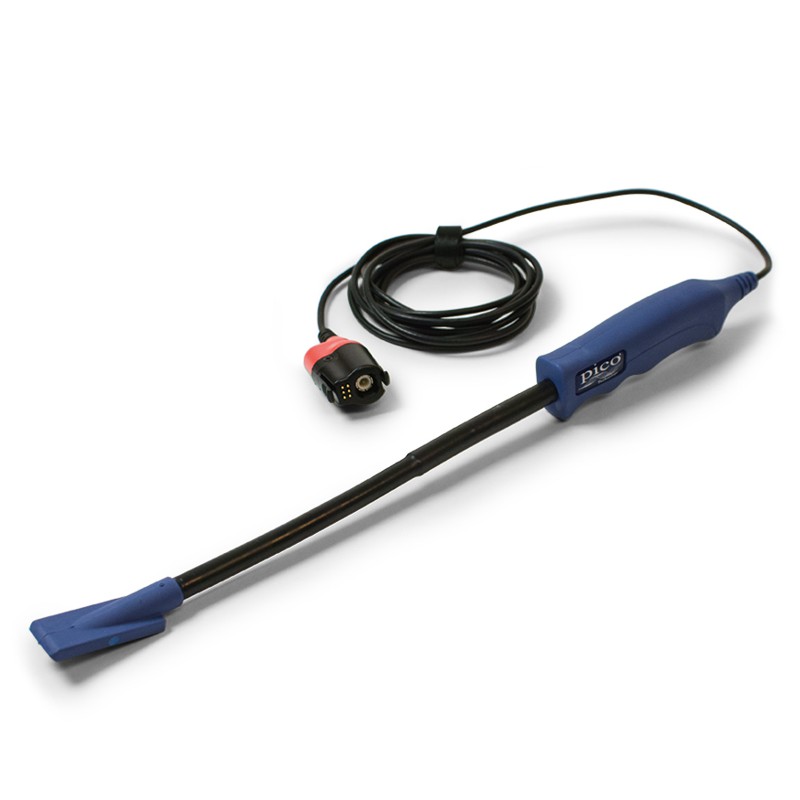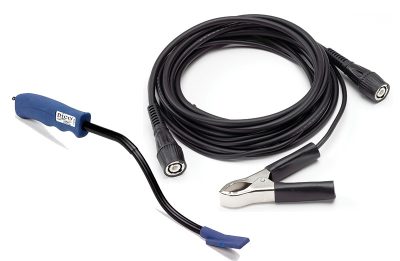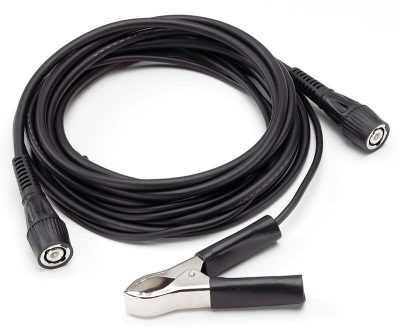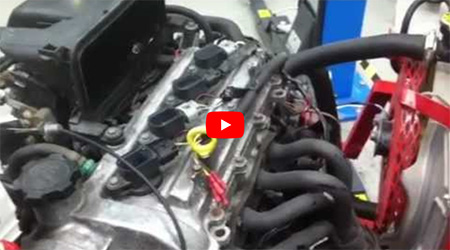Coil on Plug (COP) and Signal Probe Kit
Like distributors, spark plug wires are starting to disappear from cars. With the new COP ignition systems the ignition coils are connected directly to the spark plugs — eliminating the need for the spark plug wires. With no high-voltage spark wires, a COP probe is required to be able to pick up the secondary ignition waveform.
Unlike the BNC PICO-TA204 COP Probe, the connecting lead is integral to the COP Probe, and a PICO-TA033 is not required. This lead is fitted with a PicoBNC+ interface, allowing it to be recognised by the software for auto-configuration. The lead requires a PicoScope featuring the PicoBNC+ such as the 4225A or 4425A.
This is the equivalent of the existing PICO-PP357 COP and Signal Probe Kit together with the PICO-TA033 BNC to BNC Cable with Earth Clamp Lead. However, with the PICO-TA398 COP Probe, the BNC lead is integral to the probe thereby eliminating the need for separate earthing.
The main body of the COP Probe is unchanged preserving the benefits of flexibility to access restricted areas. The Probe is automatically recognised by PicoScope software when it is connected to the scope.
- Find misfires fast
- Displays scope patterns of the secondary, faster than scoping the primary
- Works on all automotive scopes capable of displaying ignition patterns
- Can also be used to investigate injectors and other inductive actuators
- Flexible design allows for easier access to hard-to-reach components
- No batteries required
Components
The COP probe is usually supplied as a kit (PICO-PP357), which includes both the COP probe and the BNC to BNC cable used to connect the probe to your automotive scope.
The PICO-TA033 is the 3 metre (9 ft 10 in) BNC socket to BNC socket cable with an earth clamp used to connect the COP Ignition Probe to the oscilloscope.
How does it work?
Whenever an electrical current flows, a magnetic field is generated around the conductor. When the conductor is wound into a coil, the magnetic field is intensified. If the current varies, the field strength also varies. Another coil brought into close proximity converts the variations in the magnetic field back into an electric current (transformer effect) which allows you to use the coil–on–plug and signal probe to detect current flow in coils without any electrical connection.
The probe works with most COP systems; it requires no special adaptors, no foil strips, and no batteries. The Pico coil-on-plug and signal probe eliminates the need for back-probing: to use the probe simply press the probe against the coil.
Along with testing COP systems, the coil-on-plug and signal probe can also be used to obtain many other signals, including a secondary ignition waveform on conventional ignition systems.
Designed to save you time, effort and money, the coil-on-plug and signal probe is the fastest way to test both conventional coil-on-plug secondary ignition systems.
Typical Uses
Non-intrusive diagnosis is essential during the initial inspection of a vehicle and the flexible COP/ Signal Probe becomes invaluable in these scenarios.
Misfires are a typical example of where the COP probe excels especially with modern multi cylinder engines and restricted access to coil units.
The shaft of the signal probe can be formed into any shape in order to access coil units that may be buried under intake ducting or manifold assemblies.
Once an offending cylinder has been identified by detecting the misfire, you can be much more confident in determining whether a time consuming repair is warranted.
The COP/Signal Probe is not only confined to misfire detection:
- COP units (including restricted access units) HT functionally check
- HT Leads and coil towers for HT functionality
- Injectors (Petrol/Diesel) solenoid type for an indication of operation
- Solenoids for operation check
- Oil control valves for operation check
- Throttle motors for activity check
Documentation
Understanding the Sensor's Operation
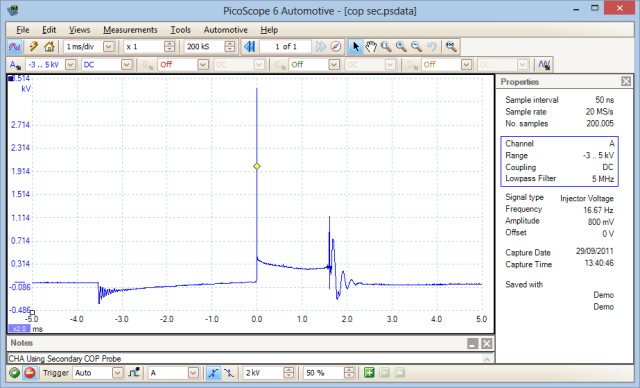
The COP probe acts very much like an extra secondary winding of a transformer when it is brought close to the coil (see How does it work? above). It therefore shows what the voltage across the actual secondary winding (driving the spark plug) looks like without having to actually connect to it. It senses the magnetic field in the coil.
The display on the left is typical of an ignition coil. Current starts to build up a magnetic field (flux) in the coil until the coil driver switches off the current (this period is the 'dwell time'). The flux begins to reset (decrease) but no current path exists. A large voltage spike results which is impressed across the spark plug electrodes.
The voltage ionises the fuel / air mixture between the spark plug electrodes in the cylinder. This creates a fairly low resistance path for the current generated in the coil by the collapsing flux to flow between the spark plug electrodes.
As the current flows, power is dissipated and heat is produced in the spark (white hot) which ignites the fuel / air mixture. The oscillations at the end of the spark result from the breakdown of the ionised path and the cessation of current flow through the spark.




